Vlad Circus: Descend into Madness review – Pixel art survival horror/adventure hybrid puts on a bloody good show
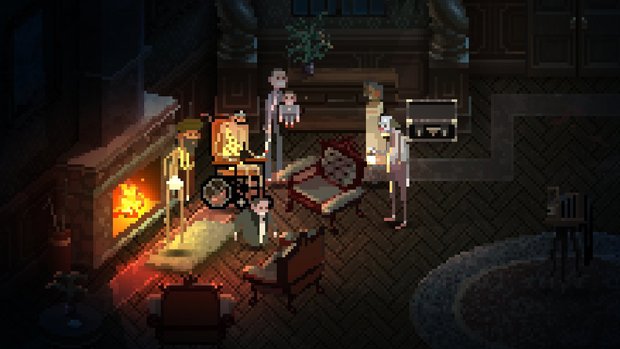
- 1 Comment
“On June 6th, 1921, the famous Vlad Circus caught fire, burning to the ground in less than ten minutes. The tragedy caused dozens of deaths and hundreds of injuries. In 1922, the owner’s brother, Josef Petrescu, was found guilty of starting the fire, and sentenced to death by the electric chair.”
These opening lines introduce you to Vlad Circus: Descend into Madness, a pixel art survival horror graphic adventure filled with surprises by Indiesruption, the creators of Nine Witches. During its four freakish hours of gameplay (on easy mode, at least), you slowly unravel how all the circus artists handled this tragedy while attempting a reunion, during which you explore a mansion and the surrounding forest for ways to open locked doors, complete fetch quests and fight off rats and disturbing monsters that may or may not be imaginary. The adventure part is fun, the action elements not as daunting as I had imagined (except for quite a brutal final sequence), but do be prepared for a couple of jump scares!
Eight years after the fire, the greatest showman in this story, Vlad Petrescu, is getting the band back together. He invites the bearded lady, the fakir, the strong man, the ventriloquist, the magician, the Siamese twins, and most importantly, the clown, to his mansion. You play as that clown, Oliver “Lazy Ollie” Mills, who spent several years in an asylum recovering from the trauma of the big blaze before being released. The game begins as Ollie wakes up in his room in the mansion moments before the power goes down. One of your first tasks, being the old circus’s electrician as well as the clown act, is to restore it.
You can control Ollie using the keyboard, but an opening title screen recommends a controller. So I plugged one in and started playing, because Vlad Circus isn’t just an adventure game. It’s also a survival horror game with a bit of action thrown in, and mashing the controller buttons could just buy you those necessary fractions of a second you might otherwise lose searching for the correct keyboard key. Thankfully you can choose your difficulty level of preference: Story Mode, for players who want to experience the story with a moderate combat experience; and Challenge Mode, for those who want a more demanding fighting experience. You can even switch between the two anytime during your playthrough; hard mode simply has more and harder to kill enemies, with less ammo.
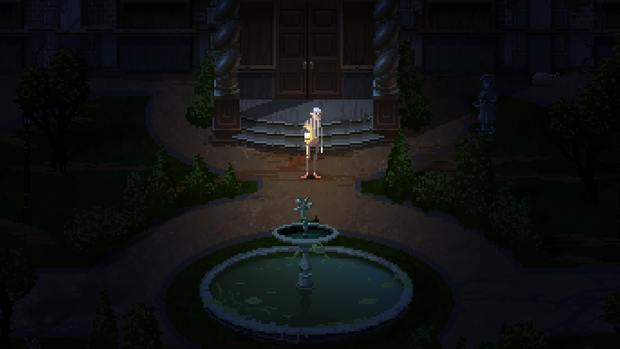
The game also warns of disturbing scenes and images, while emphasizing that it’s all very much a fictional story. The pixel art is beautifully detailed though not at all realistic, yet whenever a gruesome scene presents itself, you’ll see a close-up shot of all the blood and guts, and I admit I cringed a couple of times. All these initial cautions made me start the game in Story Mode, but still fearful of what I might encounter, I didn’t follow the final recommendation to play with earphones and the lights off. Yes, I’m a wuss when it comes to these things. Turns out I needn’t have been so frightened, at least not when it comes to the action part of the game. But more on that later.
You view the game world from an elevated position; not exactly top-down but higher than a traditional third-person adventure viewpoint. The mansion is a big place with many hallways and doors, most of them locked. Soon you find a kerosene lamp to brighten the dark corners and help you inspect hotspots. Some of those will flicker, meaning they are essential to progress, like inventory items, a safe and the elevator. But there are many other optional hotspots that only offer a little information about this fictional world and its inhabitants, such as paintings on the walls.
The manor and surrounding forest are brought to life by impressive sounds and visuals. Indoors, Ollie’s footsteps change depending on whether he’s walking on regular flooring, on carpet or on wood, and when you stop walking Ollie will scratch his head after a while. Fire crackles in the hearths, a grandfather clock ticks the time away, chandeliers or single bulbs sway back and forth, and the mansion is infested with squeaking rats. Outside, thunder cracks and rain spatters on the roof and against the windows, and the forest is filled with pigeons, owls, ravens or crows.
There’s an eerie, low-volume soundtrack that suddenly blares to add impact when Ollie encounters disturbing scenes, like the rats feasting on a dead cat in the middle of the kitchen, or a headless corpse stashed in the bushes. There’s a funny circus tune when Ollie needs to run through the forest to catch a boat, and one puzzle involving a couple of gramophone records with jazz and opera music, though the latter is very short.
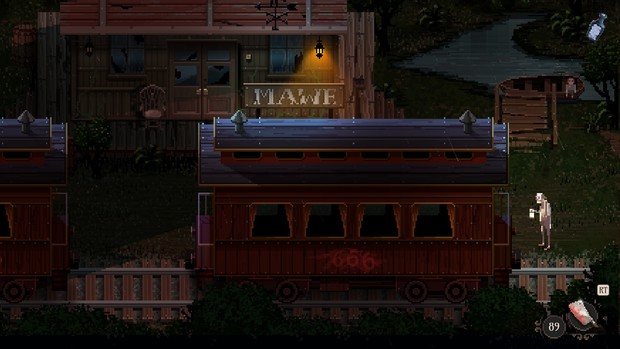
During conversation, character portraits appear at the bottom of the screen together with a dialogue box. Vlad Circus isn’t voiced, which many players might miss, but to me it added to the game’s creepy atmosphere. The text appears letter by letter, but not as slowly as in many other games, and a push of a button will make it appear in full instantaneously, where it will stay until you click it away.
Early on you’ll find Ollie’s diary. Whenever something happens, the diary will open automatically and you witness Ollie writing down the events and his thoughts in the same style as the dialog boxes. The diary also contains tabs for “remarks” (goals to be completed, like a locked cellar door to open, or a clock that needs fixing), a record of dropped objects, and a map of general locations like the house, the south forest and the north forest. The map isn’t very special at the start, but as the story progresses you’ll discover alternate routes between certain locations, which might be interesting if you want to avoid some monsters.
To access your inventory you have to open up your bag, and then you can scroll through the stuff you’re carrying and choose what to do with it. You can arrange the order of items there to quicker utilize one you might need more often. For instance, an indispensable item is the rosary Ollie inherited from his mother. During his stay in the mansion, Ollie’s stress level will rise and can only be lowered by taking the time for prayer and contemplation, so utilizing the rosary will calm Ollie down. The stress indicator also functions as a health bar. The many rats in the mansion can bite you, which of course makes Ollie anxious, and in some areas headless humanoids will chase and slash at him. Ollie also has hallucinations, which upset him. Once the stress bar is filled he will collapse, but fortunately this doesn’t mean a game-over. Instead, Ollie will wake up in the kitchen for you to keep on playing, fully calm again as if nothing has happened.
You can find and arm yourself with a knife, a revolver or a shotgun to ward off both rats and monsters. Sometimes you will find extra ammo, even in places you just passed through. Your knife often needs sharpening to be effective, however, and the lantern you carry around has to be regularly filled with kerosene. Opening your inventory pauses the game in Story Mode and gives you a little breather, but Challenge mode is trickier and lets the monsters keep coming at you! They’re faster than you and will catch up with you if you run, but it’s possible to elude them by darting around obstacles and evading them, seeking refuge through a door before they can slash you. But often you’ll have no choice but to fight.
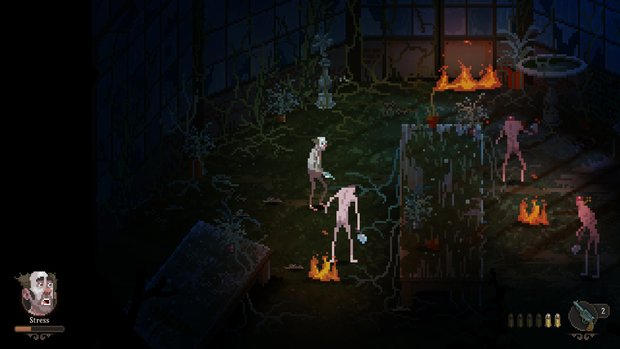
To add another layer of difficulty, Ollie has limited inventory slots. You start off with five, but the first three are almost immediately filled by the diary, the rosary and the lantern. You can find extra bags scattered about the place, allowing you to carry extra items, but these are also limited. I found four such bags, granting me nine inventory slots in total. Often you’ll have to drop one item to make room for another, so it’s handy that Ollie automatically keeps track of which room exactly he left a particular item in so you can return for it later.
Sometimes when utilizing items, like filling the lantern, sharpening the knife or using a lockpick, a little minigame pops up in the form of a slider going left to right and back, forcing you to press the action button every time it passes a small circle. Miss that circle and the action is stopped, and you have to try again, meaning opening up your inventory again, selecting the item, and choosing what to do with it from the options. It’s very basic and not that hard, but when you’re in a hurry it’s easy to miss the sweet spot. In Challenge mode, the slider moves a bit faster than in Story mode, and while you’re working the lockpick, for instance, the monsters can still harm you.
While the combat isn’t all that hard on the easier level and doesn’t take away much from the true adventuring aspects of the game, there is a final sequence where I lost track of the number of times I was “killed.” Here you need to scavenge for particular items in a maze-like environment while a boss enemy is chasing you. Get caught – in a pretty gruesome way, I might add – and you respawn at the start, but thankfully you retain your inventory. This sequence is pretty brutal and unforgiving, and it’s here where the controls can get a bit clunky. Ollie can’t turn fast enough, and I kept firing in the wrong direction because I pressed the buttons too quickly after each other. I guess that’s what panic does to you.
Vlad Circus only has an autosave function, with regular checkpoints as well as whenever you exit the game. Since you can’t actually die, saving manually isn’t really necessary, but frankly I would have appreciated it. We are dealing with a psychological horror game after all, and Ollie isn’t the only one who can have his stress levels raised! After a particularly exhausting episode of trying to fill my lantern and sharpen my knife while being attacked by monsters, attempting to pray in between to lower my stress, only to wake up in the kitchen mere seconds later, I would have felt a bit safer if I could have resorted to a manual save once in a while, if only for that placebo effect.
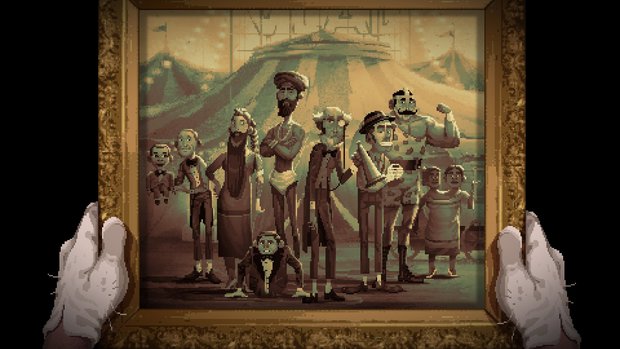
Backtracking can get a little wearisome, but I enjoyed the basic adventuring part of Vlad Circus. No brain-buster puzzles to tackle, but it’s fun simply exploring in search of the necessary items needed to use elsewhere, or in combination with each other. All of the NPCs either need something from you, or vice versa. You start off with access to limited locations, but in time you’ll get to explore more and more of the in-game map, finding keys to locked doors as you complete little quests for your fellow circus troupers. The only thing that comes close to being called a true “puzzle” involves a monkey and a clock, but so long as you pay attention it’s very straightforward. I would have preferred an unlimited inventory to facilitate smoother progress, as being forced to juggle items turns the gameplay more into a matter of logistics.
One particular cool feature is the old group photo from the time the circus was still up and running. As you gain access to the other artists’ private quarters, you find their copies of this photo and when Ollie gazes into one, he’s transported to what appears to be a sepia-toned version of the circus in his memories. In this other world, you can find recollections that hold information you need in the real world, shown in non-interactive flashback scenes. With each photo you find, new recollections are added to this world, all having to do with the owner of the photo you found.
Of all the circus performers, Ollie is a good choice for a main character. Clowns are supposed to make us laugh, but they often seem to have an unspoken sadness hanging over them. During the game, not only do you uncover Ollie’s history with the circus and in the asylum, but when he prays you also get memories of his mother giving parental advice – though not always for the best. There are clues that Ollie had a tormented childhood as well, in which religion seems to have played a big part. It’s both a refuge and a yoke for him, and while he’s a grown man now, sometimes Ollie can come across as a naive child, and it wouldn’t hurt for him to be a bit more assertive when dealing with his circus “friends”.
Because there’s certainly something going on with the other troupers, especially the bearded lady. I won’t spoil what it is, but the overall objective of the game – next to figuring out why Vlad Petrescu is acting so strange all of a sudden – is helping her out with her personal problems. I applaud the writers for making everyone and everything an integral part of the narrative. Nothing and nobody is here just for show, and I can very well believe that this cast inspired a prequel novel (The Story of Vlad Circus, currently available only in Spanish) that tells the tale of how all the characters originally ended up together. They all have their roles to play in the game, and some will make the chills run down your spine.
With a main character suffering from hallucinations, combined with the setting of an old mansion and a circus, it’s easy to make comparisons to other works of fiction like Shutter Island and the TV series American Horror Story: Freak Show. Not only through all the typical horror movie imagery, but also with the constant feeling that something is wrong, making you question what’s real and what’s not. It’s this constant guesswork, and the interaction between Ollie and the NPCs, coupled with the combat system to spice things up now and then, and the occasional need to replenish your consumables and lower your stress levels, that makes for a fun and captivating gaming experience where you basically just follow the storyline without the need to think too hard about puzzles or how to progress.
Final Verdict
I’m not a big fan of bloody horror and jump scares, but I do enjoy being chilled by suspense and psychological mind games, and Vlad Circus: Descend into Madness largely succeeds in this respect. The adventure game tasks involving locked doors and scavenger hunting are fun, and except for the final sequence, the combat segments shouldn’t bother non-action players too much, and the ones who do enjoy the adrenaline rush can easily switch to a more challenging mode. The story of a former circus troupe meeting up again years after a shared tragedy keeps you wanting more, and the mysterious circus director combined with the main character’s mental state really pulls you in. For only a four-hour game, the story is filled with surprises, and when it was over I wished the mansion had been bigger, with more rooms to explore and more puzzles to solve. Still, I had a good time while it lasted, and can heartily recommend Vlad Circus as being well worth the price of admission.
Hot take
Vlad Circus is fun and scary in all the right ways. With locked doors, monsters, a mysterious circus director and a hallucinating main character, it may not be the greatest show on earth but has plenty to entertain unsuspecting visitors.
Pros
- Captivating storyline that keeps introducing surprises
- Two difficulty levels for combat Lots of sound effects and animations bring the world to life
- Well-executed integration of survival horror elements
- Handy in-game diary to keep track of progress
Cons
- Limited inventory is frustrating
- Difficult final “boss fight” compared to the previous action segments
- Slightly on the short side
Johnny played Vlad Circus: Descend into Madness on PC using a review code provided by the game's publisher.

- Advertisement
- Help support AGH by advertising with us


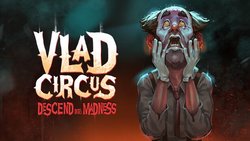







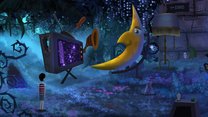
1 Comment
Want to join the discussion? Leave a comment as guest, sign in or register.
Thank you for your review.
Reply
Leave a comment